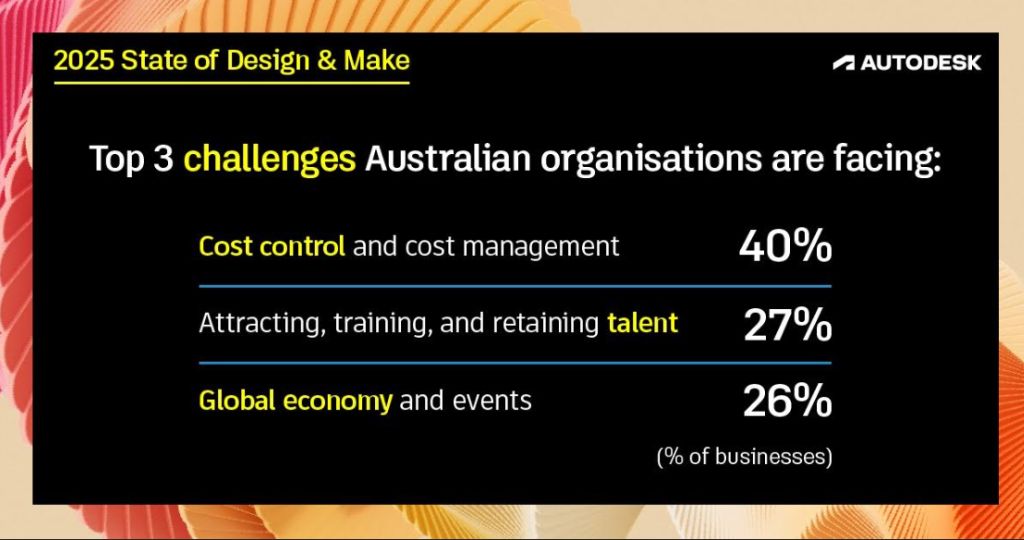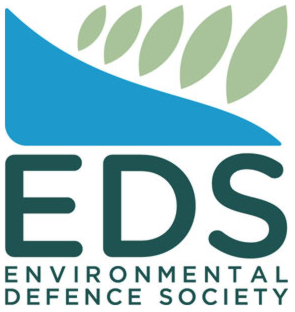AI Hype Cycle Meets Reality For Construction Industry

Auckland, New Zealand – April 17, 2025 – A new report from Autodesk, Inc. (NASDAQ: ADSK) reveals a shift in AI optimism and preparedness, as well as lingering concerns over cost control in Australian Design and Make industries – including construction and manufacturing – amid economic and geopolitical uncertainty.
The 2025 State of Design & Make report surveyed and interviewed 5,600 global business leaders – including 460 in Australia – in industries that comprise the Design and Make category. These sectors include architecture, engineering, construction and operations (AECO), product design and manufacturing (D&M), and media and entertainment (M&E).
In Australia, 2024 was defined by high cost of living pressures, exacerbated by high interest rates and inflation. This severely impacted design and make industries, with the 2025 Design & Make report revealing that 40 per cent of Australian respondents consider cost control and cost management to be the largest challenge facing their organisation.
The report found that investments are down year over year, which could be reflective of high interest rates and therefore a higher cost of borrowing. However, despite slowing investments, optimism remains high, with 67 per cent of leaders saying their organisations will increase future investments.
“Alongside cost-of-living, artificial intelligence dominated Australia’s attention in 2024,” said Andy Cunningham, Senior Regional Director for Australia and New Zealand at Autodesk. “However, it appears this fixation has tapered off, following the natural path of tech hype cycles. And as the report reveals, Australian organisations are feeling less confident in AI.”
The report states that 68 per cent of respondents believe AI will enhance their industry, down 9 per cent from last year – this shift is in line with global findings, which show a 12 per cent year-on-year decline in leaders who said AI would enhance their industry.
The number of Australian leaders who believe AI will destabilise their industry stayed at 55 per cent. However, this number is higher than the global average, which shows 48 per cent of leaders think AI will destabilise the industry, up 20 per cent year-on-year.
“This global drop in AI optimism across industries signifies the technology is following the classic tech hype cycle, as leaders face the reality of implementation, an ongoing technical skills shortage, and the limitations of the current technology,” said Cunnigham. “We were surprised by the AI optimism last year, but it appears the more we are learning about the technology, the more sceptical organisations are becoming. Disruptions in the industry have understandably made organisations more wary, yet the data shows that early adopters are still reaping the benefits.”
This change in sentiment indicates a growing wariness in the industry, as geopolitical tensions increase. In fact, 72 per cent of leaders feel the global landscape is now more uncertain and only 62 per cent say they are well prepared for changes, down 16 per cent from last year.
Organisations that are more digitally mature feel more confident in being able to withstand the geopolitical storm, with 79 per cent of digitally mature companies saying they are well prepared to handle unforeseen changes compared to 45 per cent of less digitally mature companies.
AI and Sustainability: Australia slower moving than global average

According to the report, 94 per cent of Australian leaders state their organisations are taking steps to be more sustainable, yet only 30 per cent of respondents are using AI to be more sustainable, compared to 39 per cent in APAC and globally.
“This slow-moving approach to using AI for sustainable solutions may be harming our progress,” said Cunningham. “AI has been crucial for enhancing sustainability in the design and manufacturing industries, where 80 per cent of a product’s environmental impact is influenced by decisions made at the design stage. To meet sustainability targets, AI has been a trusty assistant, from conception through to production.”
Globally, AI is identified as the top sustainability enabler for Design and Make industries for the second year in a row, with 39 per cent of leaders saying they use AI to be more sustainable, up from 34 per cent last year and 26 per cent in 2023.
Digital Maturity: a 50/50 landscape in Australia
‘Digitally mature’ is defined as businesses that are approaching or have achieved their digital transformation goals. Those that are less digitally mature are typically at the early or middle stages of the digital transformation journey.
238 of the Australian respondents are classified as digitally mature companies, while 222 are at the early or middle stages of their digital transformation.
To gain a competitive advantage, 40 per cent of digitally mature companies use internal data compared to 25 per cent of less digitally mature companies. Similarly, 39 per cent of digitally mature companies are using internal data to develop products or complete projects faster, compared to 28 per cent of less digitally mature companies.
Digitalisation also seems to spur business confidence and growth, with 78 per cent entering new markets compared to 59 per cent of less digitally mature companies.
“The results show digitalisation continues to be a crucial foundation for business confidence, keeping a competitive edge and encouraging investment in research and development,” said Cunningham. “Those that are more digitally mature have a more robust data system and are therefore able to collate more information throughout the project life cycle to improve future projects.”
Talent crunch

Finding skilled talent remains a top concern for Design and Make industries. In Australia, 61 per cent of business leaders say lack of skilled talent is hindering growth. Globally, nearly two-thirds of organisations are feeling the skills gap grow, with 58 per cent finding the lack of skilled talent hindering growth, a 15 per cent increase year-on-year.
When it comes to bridging and filling the skills gap, digitally mature companies are at a distinct advantage. Globally, 77 per cent of digitally mature companies will invest more in digital training, compared to 59 per cent less digitally mature companies.
They are also more likely to implement continuous learning programs than less digitally mature companies, at 74 per cent and 55 per cent respectively.
Download the 2025 State of Design & Make report.
About the State of Design & Make report
Autodesk has served the Design and Make industries for decades, giving the company unique access to experts in the AECO, D&M, and M&E industries. For this year’s global report, Autodesk surveyed and interviewed nearly 5,600 industry leaders, futurists, and experts in the architecture, engineering, construction, and operations; design and manufacturing; and media and entertainment industries from countries around the globe. This report contains key findings from this research, including details at the sector and regional level.
Autodesk will update the State of Design & Make report annually.
About Autodesk
The world’s designers, engineers, builders, and creators trust Autodesk to help them design and make anything. From the buildings we live and work in, to the cars we drive and the bridges we drive over. From the products we use and rely on, to the movies and games that inspire us. Autodesk’s Design and Make Platform unlocks the power of data to accelerate insights and automate processes, empowering our customers with the technology to create the world around us and deliver better outcomes for their business and the planet. For more information, visit autodesk.com.au or follow @autodesk. #MakeAnything


 Nicola Gaston, The Conversation: NZ Budget 2025 - Science Investment Must Increase As A Proportion Of GDP For NZ To Innovate And Compete
Nicola Gaston, The Conversation: NZ Budget 2025 - Science Investment Must Increase As A Proportion Of GDP For NZ To Innovate And Compete Maritime Union of New Zealand: Maritime Union Condemns Threatened Job Losses On Aratere Ferry
Maritime Union of New Zealand: Maritime Union Condemns Threatened Job Losses On Aratere Ferry Science Media Centre: Proposed Increase To Glyphosate Limits – Expert Reaction
Science Media Centre: Proposed Increase To Glyphosate Limits – Expert Reaction Electricity Authority: Welcomes Plan For Boosting Consumer-Supplied Flexibility
Electricity Authority: Welcomes Plan For Boosting Consumer-Supplied Flexibility University of Auckland: How Can Finance Be Harnessed For Good?
University of Auckland: How Can Finance Be Harnessed For Good? Michael Ryan, The Conversation: NZ Budget 2025 - Economic Forecasting Is Notoriously Difficult, But Global Uncertainty Is Making It Harder
Michael Ryan, The Conversation: NZ Budget 2025 - Economic Forecasting Is Notoriously Difficult, But Global Uncertainty Is Making It Harder


